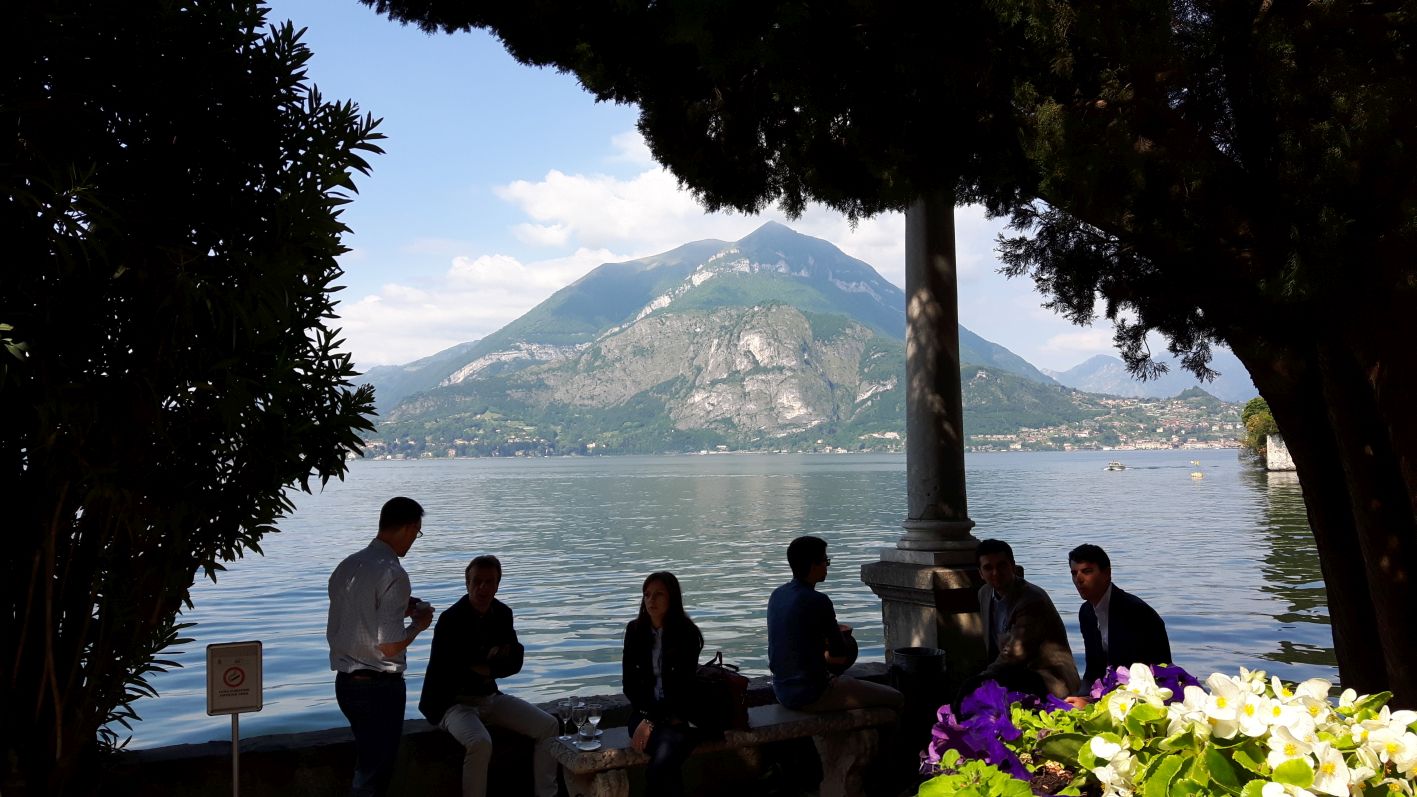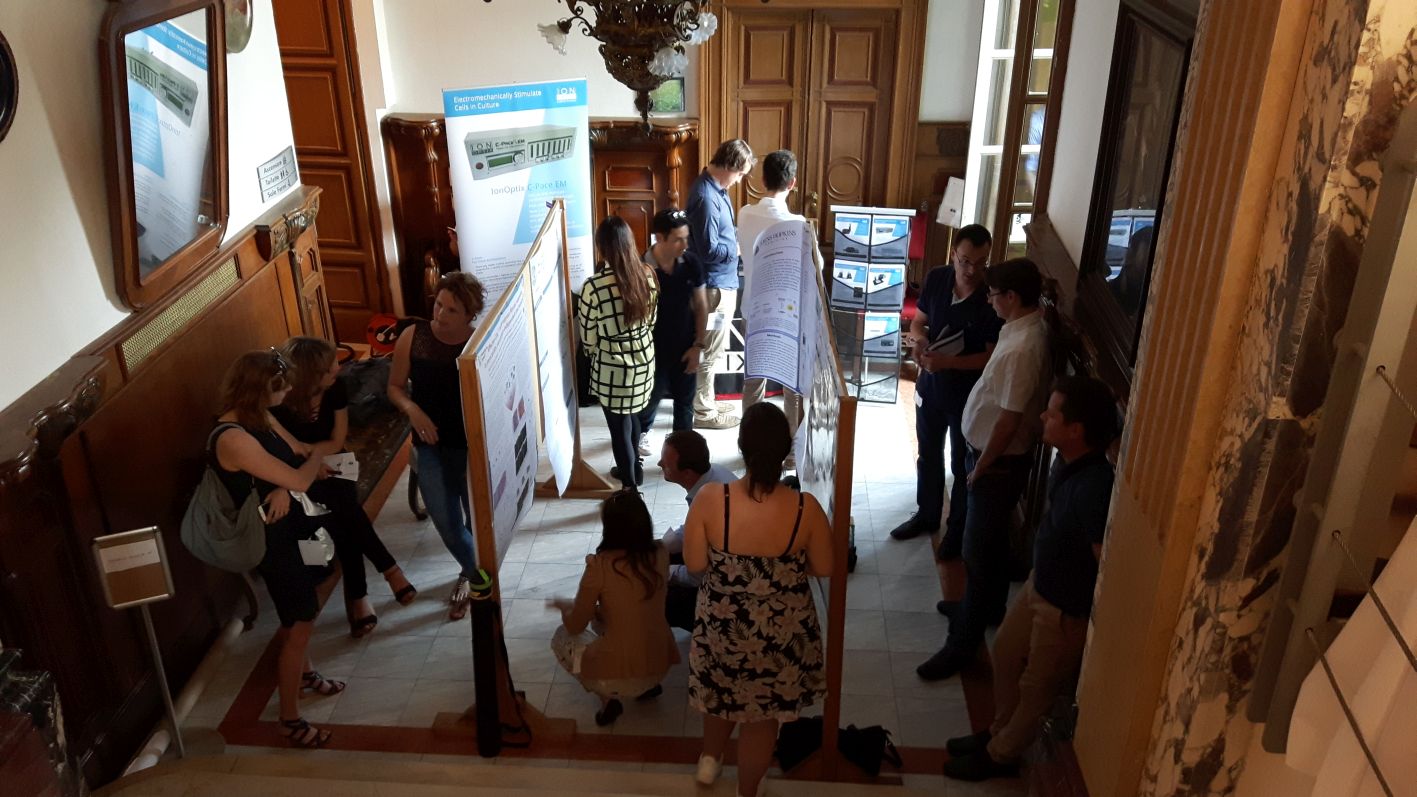"Scenic is only four letters short of scientific: young scientists and established investigators bring their latest research to picturesque Varenna" by Linda van Laake and Nazha Hamdani.
The Working Group on Myocardial Function and Cellular Biology of the Heart had their biennial meeting in Varenna, Italy. The theme of this year’s meeting was “The multicellularity of the heart: genetic innovations driving cardiovascular science”.

 In an extraordinarily beautiful and inspiring environment, researchers exchanged their latest findings. Only active participants could attend, and all were asked to be present for the entire meeting. Each plenary session started with a contextual lecture by an established investigator, followed by two to four abstract-based talks by PhD students or postdocs. Be it the calming view of Lake Como in the background or the friendly informal atmosphere amongst the attendants, the junior members had plenty of interaction with each other as well as with the senior scientists. In addition, the two poster sessions received full attention and with a great interaction between presenters and attendees as the posters were of very high scientific quality.
In an extraordinarily beautiful and inspiring environment, researchers exchanged their latest findings. Only active participants could attend, and all were asked to be present for the entire meeting. Each plenary session started with a contextual lecture by an established investigator, followed by two to four abstract-based talks by PhD students or postdocs. Be it the calming view of Lake Como in the background or the friendly informal atmosphere amongst the attendants, the junior members had plenty of interaction with each other as well as with the senior scientists. In addition, the two poster sessions received full attention and with a great interaction between presenters and attendees as the posters were of very high scientific quality.

Specific highlights of the topics discussed at the conference included the discovery of the multiple novel layers of post-transcriptional regulation, including the role of non-coding RNAs (which, as we learned, may sometimes be coding after all). Eventually, this may also have implications for the interpretation of genetic testing in patients and family screening, as was discussed in the sessions on genotype-phenotype correlations and promises/pitfalls of omics approaches. In addition, the unsure pathogenicity of genotypes is of relevance for scientists who aim to study pathological mechanisms in vitro, for example from induced pluripotent stem cells of mutation carriers.
The debate on the nomenclature of cardiac stem/progenitor cells was a fine example of the added value of diverse input through junior scientists. After a series of abstract-based talks, it became painfully clear that we need a more specific description of these cell types. Finally, the role of the immune system in cardiovascular disease is increasingly recognised. A full session was dedicated to the role of inflammation in cardiac regeneration and cardioprotection. The guest Working Group on Myocardial and Pericardial Diseases also contributed a session on STAT3, complement and autoimmune myocarditis.
The Scientists of Tomorrow are officially connected to the organising Working Groups via Nazha Hamdani (SoT representative in the nucleus of Myocardial Function) and Linda van Laake (SoT representative in the nucleus of Cellular Biology). More importantly, however, several presenters at the meeting were SoT members or decided to join via the LinkedIn community after hearing about the SoT initiative.
Anke Smits, assistant professor at Leiden University Medical Center and SoT nucleus member, presented the mission and activities of the SoT in an inspiring pre-dinner speech. “Don’t let our name fool you”, she said, “the Scientists of Tomorrow are young, but many of them already perform top-notch research today”. That was exactly what everybody had already noticed.
Based on the plenary sessions and the outcome of the meeting, the Working Group on Myocardial Function and Cellular Biology have proposed new position papers and different mini-reviews, in which we will provide an understanding of the basic pathophysiology of a disease, to novel therapeutic and diagnostic testing, ultimately targeting clinical trials of point-of-care patient applications.

 Our mission: To reduce the burden of cardiovascular disease.
Our mission: To reduce the burden of cardiovascular disease.